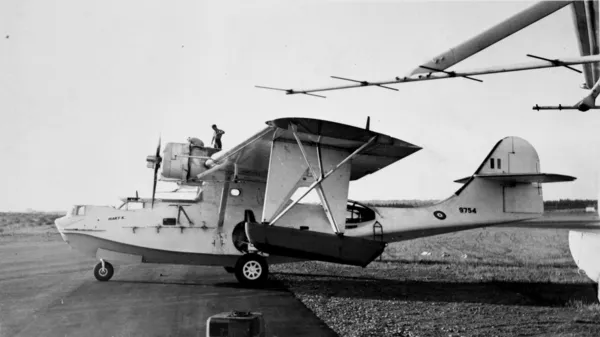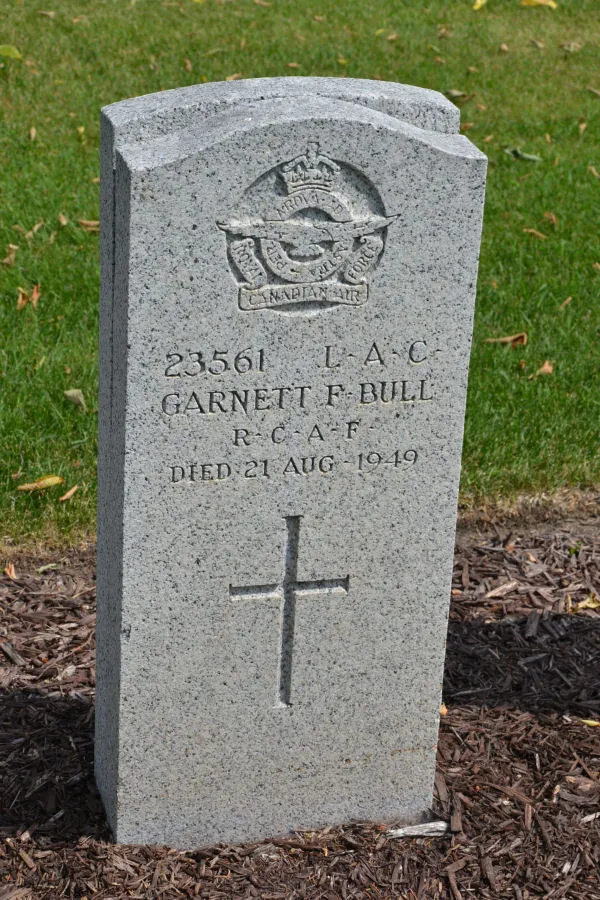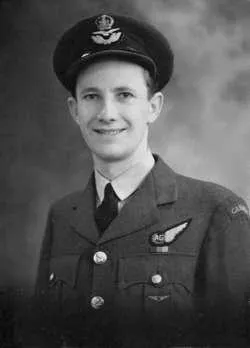Consolidated Canso Catalina PBY PB2B A-10 OA-10 Black Cat

The Consolidated Catalina and Canso were close cousins. The Canso was the true amphibious version of the design and therefore included a conventional undercarriage to allow for either water or land use. The Canso provided more than two decades of valuable service to the RCAF. The Catalina variant came first and was produced beginning in 1935 for the United States Navy. The amphibious version, designated PBY-5A, came in service early in 1941 and the RCAF began using the aircraft on anti-submarine patrols that same year. After the Second World War, the RCAF used Cansos for search and rescue, Arctic survey missions and various transport operations. RCAF
CASPIR Aircraft Groups:
RCAF On Strength (274), RCAF 400 Squadron (13), Canadian Aircraft Losses (82)Canso A 11057
Delivered new to storage. First issued to a unit on 2 May 1944. With No. 116 (BR) Squadron in Newfoundland or Nova Scotia, c.1944 to 1945. Coded "E". To Clark Ruse Aircraft on Moncton, NB on 23 June 1944 for repairs, back to EAC on 5 September 1944. To No. 4 Repair Depot for major inspection on 8 March 1945. To storage at RCAF Station Mont Joli, Quebec on 31 May 1945. Listed as available for disposal on 2 February 1946, airframe time was 398:35. To de Havilland Aircraft Canada on 1 December 1947 for radio modifications and refurbishment. Airframe time when completed on 9 July 1948 was 408:00. To No. 413 (P) Squadron in July 1948, used from Eureka, NWT that summer. Back to DHC on 12 October 1948 for repair of leaking fuel tank and refurbishment. Completed on 10 November 1948, assigned to North West Air Command on that date. Used by No. 111 (K) Flight at RCAF Station Winnipeg, Manitoba, coded "CF*057". Crashed 21 August 1949, after encountering bad weather on medevac from Chesterfield Inlet, NWT via Churchill, Manitoba to Winnipeg. Was evacuating a family of 6 to 8 Inuit, several with possible polio. All on board killed: 7 RCAF, 4 Department of Transport employees, civil nurse and newspaper reporter. Wreckage located on 23 August 1949, east of Bigstone Lake near St. Theresa Point.
1944-03-23 Taken on Strength Eastern Air Command 2019-08-20
1949-09-08 Struck off Strength Struck off after Category A crash. 2019-08-20




 Canadian Virtual War Memorial
Canadian Virtual War Memorial Find-A-Grave.com
Find-A-Grave.com St James's Cemetery, Canada
St James's Cemetery, Canada



 Canso PBY
Canso PBY Wikipedia Canso PBY
Wikipedia Canso PBY Harold A Skaarup Web Page
Harold A Skaarup Web Page